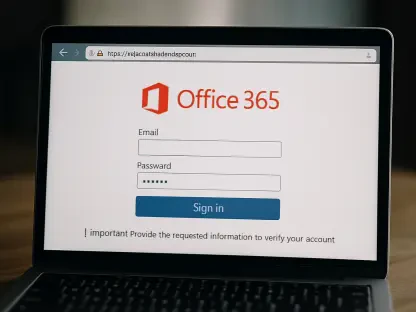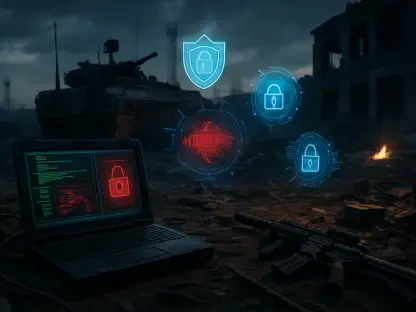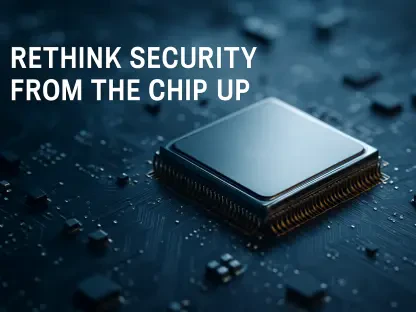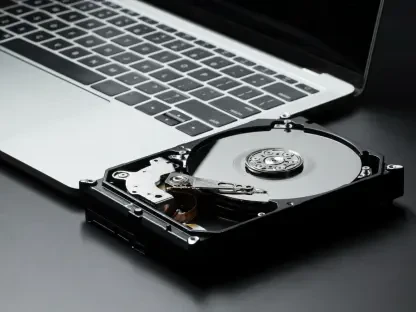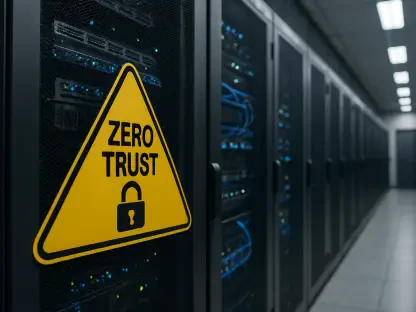In today’s interview, we delve into the complex landscape of cyber threats emanating from Iran, as highlighted in a recent U.S. government advisory. Our guest, Rupert Marais, is an authority in endpoint and device security, cybersecurity strategies, and network management. His insights shed light on the implications of geopolitical tensions on cybersecurity and offer practical advice for organizations at risk.
Can you explain the nature of the cyber threats mentioned in the government advisory linked to Iran?
The advisory highlights that Iranian hackers are likely to target U.S. infrastructure as a form of retaliation. These threats encompass a range of cyber operations aimed at causing disruption, financial losses, and reputational damage. The focus is on critical infrastructure, particularly targeting vulnerabilities in systems that are poorly managed or have outdated security measures.
Which U.S. government agencies issued this warning, and what was their primary concern?
The warning came from multiple U.S. agencies, including CISA, the FBI, NSA, and the Department of Defense’s Cyber Crime Center. Their primary concern is the risk Iranian cyber operations pose to critical infrastructure, especially in light of geopolitical tensions exacerbated by recent U.S. actions alongside Israel.
What historical context is contributing to the current cyber threat from Iran?
Historically, Tehran-linked hackers have repeatedly targeted Western infrastructure in response to military actions, especially those involving Israel. This pattern of retaliation has roots in ongoing geopolitical conflicts and sanctions, which often spur Iran to flex its cyber capabilities as a form of resistance or retaliation.
How does the geopolitical environment, particularly the U.S. and Israel’s actions, influence Iran’s potential cyber operations?
The geopolitical environment plays a significant role. Collaborative military efforts by the U.S. and Israel against Iran’s interests, such as recent airstrikes, often provoke cyber retaliations from Iran. These actions signal not just military resistance but also an attempt to leverage cyber operations to extend their influence and presence on the global stage.
Who are the main targets mentioned in the advisory, and why are they at risk?
The advisory identifies defense contractors—especially those with ties to Israeli companies—as the primary targets. These organizations are at heightened risk due to their relevance in national defense and international alignments that oppose Iranian interests, making them symbolic and strategic targets for disrupting operations and sowing political discourse.
How have Tehran-linked hackers historically targeted Western critical infrastructure?
Historically, these hackers have engaged in diverse cyber activities, from attacking operational technologies in utilities to initiating hack-and-leak campaigns. These operations are often aimed at undermining the functionality of critical services and gaining strategic advantages by exploiting internet-connected devices and networks in critical infrastructure sectors.
Can you provide examples of past cyberattacks linked to Iran, specifically during the late-2023 offensive in Gaza?
During the late-2023 Gaza offensive, Iranian hackers affiliated with their government targeted infrastructure by exploiting operational technology in water utilities and other critical sectors. They executed attacks that infiltrated systems, leading to both physical disruptions and financial consequences for the affected parties.
What type of operations have Iranian hacktivists already conducted in recent months?
In recent months, Iranian hacktivists have been actively defacing websites and leaking sensitive information. This activity aims to embarrass or damage the reputations of their targets, with a focus on sowing discord and drawing attention to their causes, particularly following significant geopolitical developments.
How might hacktivist activities increase following the recent U.S. intervention in Iran?
Following U.S. interventions, hacktivist activities are likely to escalate, with increased campaigns against U.S. and Israeli digital assets. Distributed denial of service (DDoS) attacks and other disruptive actions might spike as these groups attempt to retaliate digitally against perceived aggressions by leveraging their technological prowess.
What might motivate Iran to use cyber operations for retaliation, according to cybersecurity experts?
Experts suggest that cyber operations provide Iran with a means to retaliate with a degree of deniability and extend their reach without engaging in direct military conflict. It’s an effective way to assert influence and demonstrate technological competence while impacting their adversaries on a political and economic level.
How do cybersecurity experts view the impact of these hacking operations in terms of psychological warfare?
Cybersecurity experts often view these operations as tools of psychological warfare. They are less about causing broad physical damage and more about creating a narrative of fear, uncertainty, and amplified threat, which can influence political decisions and public perception without traditional force.
Why is it important not to overestimate the threat posed by Iranian cyberattacks, as suggested by experts?
Experts caution against overestimating these threats to avoid unnecessarily elevating the psychological impact of Iran’s cyber capabilities. Overhyping the danger can play into their intended strategy by creating more fear and disruption than the actual attacks might warrant.
What basic steps should critical infrastructure organizations take to protect themselves from Iranian cyber threats?
Organizations should focus on strengthening their cybersecurity posture by disconnecting operational technologies from the internet, using robust passwords, implementing multifactor authentication, and ensuring all systems are patched regularly. Proper cybersecurity hygiene and proactive measures are essential to mitigating these risks.
How can disconnecting operational technology from the internet help in securing critical infrastructure?
Disconnecting these systems from the internet significantly reduces their exposure to external threats. It prevents hackers from exploiting vulnerabilities via online access and helps contain potential damage to isolated networks, thereby protecting critical operations from being hijacked or disrupted.
Why is it essential to use strong passwords and phishing-resistant multifactor authentication on user accounts?
Strong passwords and advanced authentication measures are critical because they reinforce account security, making it considerably harder for attackers to gain unauthorized access. These steps help defend against common entry methods such as brute force attacks and phishing, which are prevalent tactics among hacktivist groups.
What role does patching internet-facing systems play in preventing cyberattacks?
Regularly patching systems is vital as it closes off vulnerabilities that hackers exploit. By staying current with security updates, organizations minimize the risk of attacks that leverage outdated software weaknesses, often used as entry points for sophisticated cyber operations.
How important is logging user activity and preparing incident response plans in mitigating cyber threats?
Logging user activity provides a record that can be crucial for detecting and understanding the scope of any breach. Incident response plans ensure that organizations can quickly and effectively respond to threats, limiting damage and aiding recovery efforts. These strategies are critical for maintaining resilience against sophisticated cyberattacks.
Do you have any advice for our readers?
Stay informed about emerging threats and regularly review your organization’s security practices. Prioritize training for all employees so they can recognize and respond to potential cyber threats. Cybersecurity is not just a technical challenge but also a human one, requiring vigilance and adaptability.



